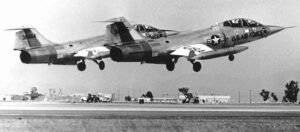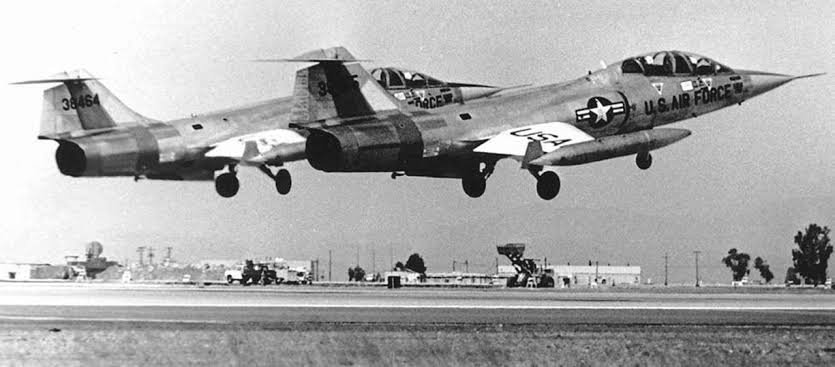The German and U.S. Air Force fighter training program at Luke AFB saw a major upgrade on April 1, 1964.
The German and U.S. Air Force fighter training program at Luke AFB saw a major upgrade on April 1, 1964.

**German and U.S. Air Force Fighter Training Program at Luke AFB Receives Significant Upgrade on April 1, 1964**
On April 1, 1964, the fighter training program at Luke Air Force Base, a collaborative effort between the German Air Force and the U.S. Air Force, experienced a substantial upgrade. This enhancement marked a significant milestone in the ongoing partnership between the two nations, aimed at strengthening their military capabilities and operational effectiveness.
**Enhancing Training Capabilities**
The upgrade included the introduction of advanced aircraft, improved training facilities, and updated curricula designed to meet the evolving demands of modern aerial combat. The new aircraft, equipped with state-of-the-art technology, provided pilots with the opportunity to train under conditions that closely simulated actual combat scenarios. This development was seen as a crucial step in ensuring that pilots from both air forces remained at the forefront of aviation proficiency and readiness.
**A Historic Partnership**
The German and U.S. Air Forces have a long-standing history of cooperation, dating back to the early days of the Cold War. The joint training program at Luke AFB has been a cornerstone of this partnership, facilitating the exchange of knowledge, techniques, and tactical expertise. The latest upgrade is expected to further solidify this relationship, enhancing interoperability and mutual understanding between the two forces.
**Key Features of the Upgrade**
One of the most notable aspects of the upgrade was the introduction of the F-104 Starfighter, a supersonic jet that significantly outperformed previous training aircraft. With its cutting-edge avionics and weapon systems, the F-104 provided trainees with a more realistic and challenging training environment.
Additionally, the training facilities at Luke AFB underwent extensive renovations. These improvements included the construction of new simulation centers, advanced maintenance and repair shops, and expanded runways to accommodate the new aircraft. The updated curriculum also reflected the latest advancements in air combat tactics, ensuring that trainees received the most current and comprehensive instruction available.
**Strategic Importance**
The timing of the upgrade was particularly significant, given the heightened tensions of the Cold War era. By enhancing the training capabilities of both air forces, the upgrade was intended to bolster NATO’s collective defense posture against potential adversaries. The increased readiness and proficiency of German and American pilots were seen as vital components in maintaining the balance of power in Europe and beyond.
**Future Prospects**
Looking ahead, the upgraded training program at Luke AFB is expected to continue evolving in response to technological advancements and emerging threats. Both the German and U.S. Air Forces remain committed to fostering a robust and dynamic training environment that prepares their pilots for the complexities of modern warfare.
**Conclusion**
The significant upgrade to the German and U.S. Air Force fighter training program at Luke AFB on April 1, 1964, represents a major advancement in the long-standing partnership between the two nations. With improved aircraft, enhanced facilities, and an updated curriculum, the program is poised to provide unparalleled training opportunities for pilots. This development not only strengthens the military capabilities of both air forces but also reinforces their strategic collaboration in safeguarding global security.




Post Comment